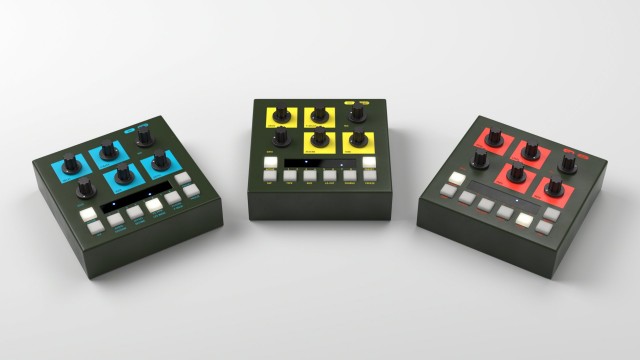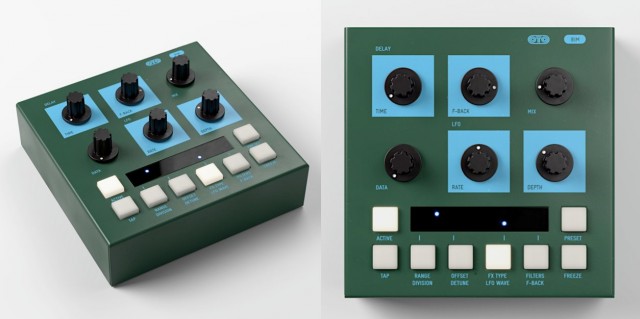It’s not enough to just release sound hardware. You want something different, something with character. French builder OTO Machines did that with their Biscuit, a gorgeous combination of 8-bit crunch and analog filtering, then later turned it into a synth and step sequencer with nothing but firmware. But now it’s time for a follow-up, and instead of one sequel, we get three.
There’s a 12-bit delay unit, a digital reverb inspired by some 80s classics that never get old, and an analog compressor/”warmer”. That neatly covers three bases of things many people want, and seem to target a nice space where there’s room both to reproduce and invent anew. And these arrive just in time, as the Biscuit fades into the sunset.
The three boxes, cutely dubbed BIM, BAM, and BOUM. I will quote directly here as they’ve been nicely clear with their description:
BIM: “Poetic Repeater”
BIM – Poetic Repeater
12-bit delay (up to 2 seconds in stereo) with modulation (several waveforms available), separate hipass & lowpass filters for the delay signal and the feedback path, extra FXs (Reverse, Flanger, Dual Head, Distortion,…).
True 12-bit converters, filters, compander & feedback paths are analog for a very warm and grainy sound.
TAP and FREEZE function. Delay can be synced to MIDI Clock.BAM – Space Generator
Digital reverberator inspired by the early 80’s 16-bit units (EMT250, Lexicon 224,…). Several algorithms including Halls, Rooms, Space, weirdos, springs, resonators…
Predelay is up to 1 second. A “Drive” pot let you distort the input of the reverb.BOUM – Warming Unit
Analog Compressor with tube emulation, octave, soft and hard distortion, followed by a 3 mode-2 pole Biscuit filter.
The compressor have Mode, Attack and Release settings.
An envelope generator (normal or inverse) let’s you create envelope filters or envelope levelers.
The distortion circuit is specially designed for synths, loops, drums,…and keeps the dynamic of the signal.All units have stereo I/O, MIDI input (CCs for all parameters, Beat Clock, Pgm Change), true hardware relay bypass, 36 user presets.
Size is 145 x 145 x 60 mm. 2 lines of 8 white LEDS for displaying parameters, preset number, input vu-meter…Price for each unit will be about 325 euros (excluding VAT).
Release is planned for 2014 Q4.
I had hoped to catch up with OTO Machines last week, as they were scheduled to share a booth with us at Frankfurt Musikmesse. They stayed home, though, to work hard on getting these devices finished, so I will instead wait patiently and look forward to getting these gadgets into the studio and making sound – no trade show distractions in sight.
Now, some might see the backwards-looking design trend now in hardware as the opposite of innovation. I tend to view this differently. I think iterative innovation is the essence of musical instrument design. Blessed with the gift of hindsight, we’re seeing certain categories emerge for their sheer usefulness. And smart designers are bringing their own personality and ideas. Sometimes, the greatest innovation comes in improving a design rather than trying to crudely invent something from scratch. Oddly, it’s the latter that often leads to reinvention; the former is where you can more easily introduce new ideas, because there’s a template. Constraints can inspire. Or, at least, that’s my hope for OTO and a crop of new hardware (and music, and myself).
Everything OTO Machines is here:
http://www.otomachines.com/

